-
Car Reviews
- All reviews
- Midsize SUVs
- Small cars
- Utes
- Small SUVs
- Large SUVs
- Large cars
- Sports SUVs
- Sports cars
- Vans
Latest reviews
- Car News
-
Car Comparisons
Latest comparisons
- Chasing Deals
Brash styling, cool interior design and loads of excess outline the first standalone BMW M car in 45 years – but the XM is a compromised machine
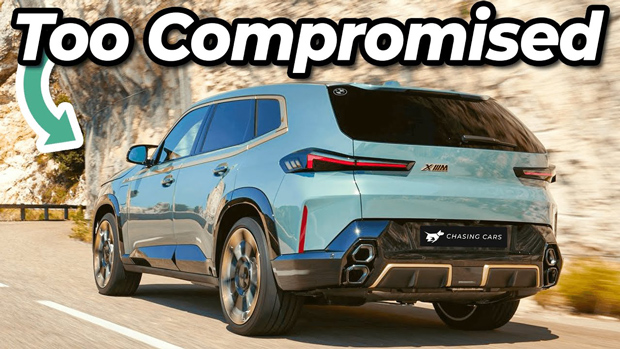
The new XM is a truly landmark BMW M car of the likes that Munich’s performance skunkworks hasn’t produced in quite some time. And it’s a strong enough departure from its broader road car portfolio that surely it signals, to no small extent, where M GmbH is headed in the future.
The 50th anniversary of BMW M – formerly BMW Motorsport – whizzed by last year, and some might’ve expected an electric sports car or coupe might’ve been on the cards in celebration – a forward-looking figurehead to compliment BMW’s growing range of mainstream and M-fettled EVs.
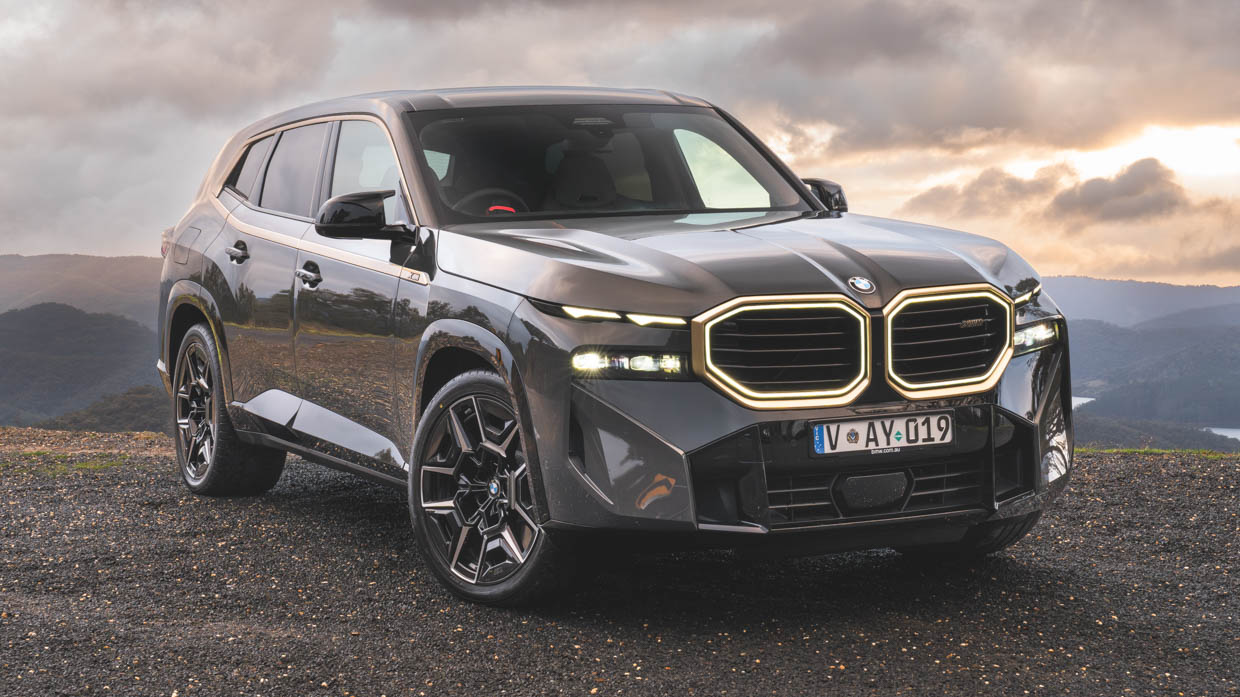
And one was, in the form of an extremely limited 3.0 CSL reincarnation. Beyond the 50 units produced of that manual-transmission coupe, BMW M’s principal birthday present to itself – and its customers – was the XM plug-in hybrid SUV, priced from $302,200.
While the XM is M division’s first standalone in-house developed model since 1978’s M1 supercar, this ‘Sport Activity Vehicle’ isn’t quite what many diehard M car fans may have been expecting – especially given how many benchmarks it pins to the brand’s providence.
The first standalone M model in 45 years and its first-ever electrified drive – and thus debut hybrid – are all key landmarks. And the XM is certainly minted, inside and out, in an approach to design that’s forging new territory.
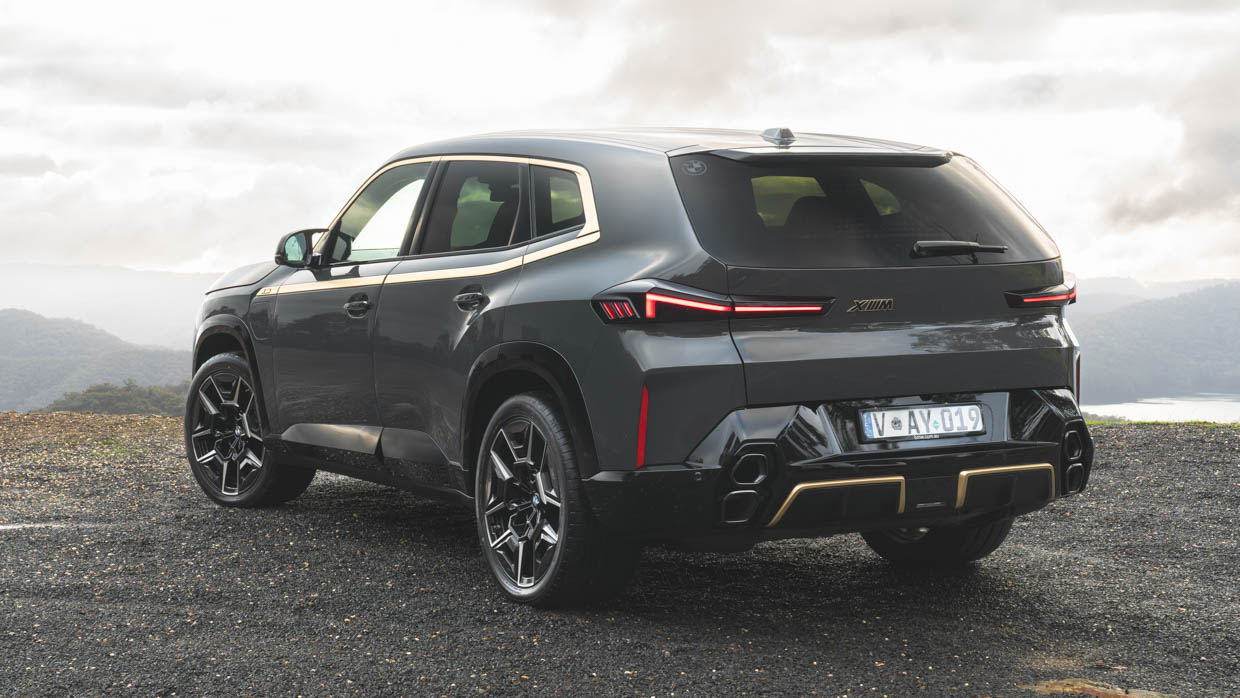
There’s more. The regular XM will shortly be joined by year’s end by a hotter Label Red version boasting 550kW and 1000Nm that will stake the claim as officially the most powerful M car ever produced.
Perhaps how BMW M arrived at luxo-performance SUV format was a decision to use both an existing twin-turbocharged 4.4-litre V8 engine and the scalable CLAR architecture already used in wildly disparate models such as the electric i7 limousine and Toyota’s current ICE-powered Supra sports car.
Perhaps the former anchors degrees of heritage and credibility, while the latter might’ve been the most practical, flexible and cost-effective solution.
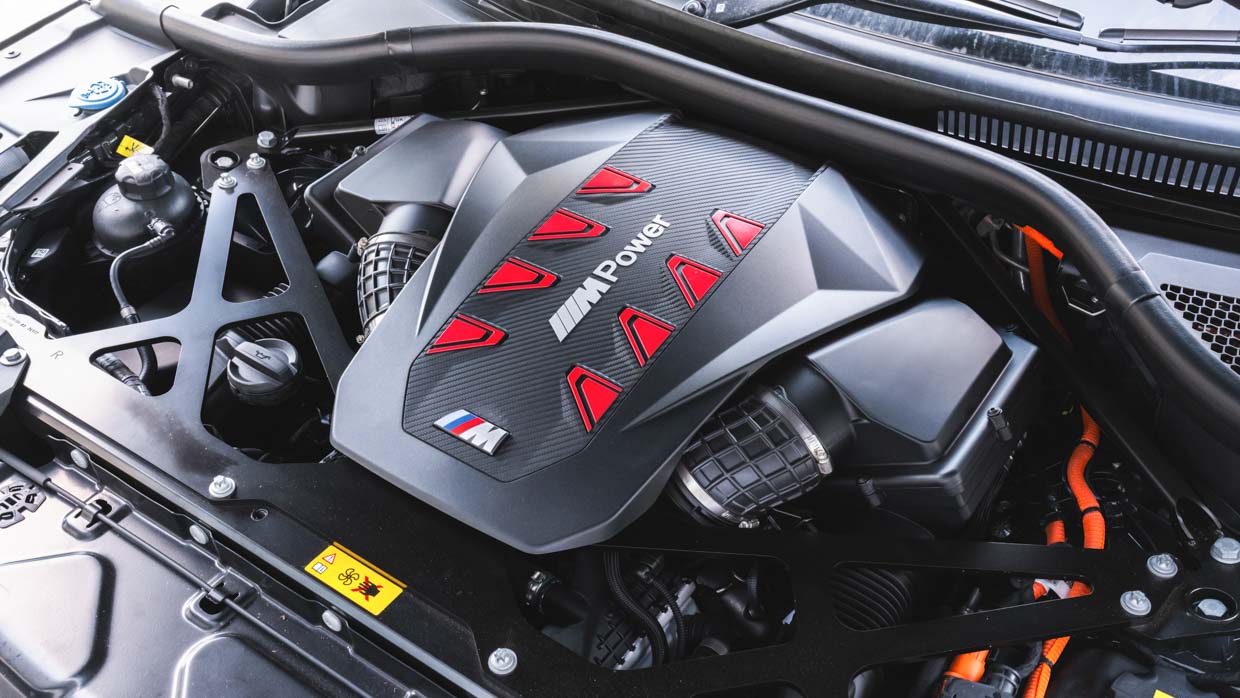
Plug-in hybridisation of the V8 allows heroic enough stats: 480kW and 800Nm in regular XM guise. But the powertrain complexity clearly comes with a weighbridge penalty once you include a tickbox of features befitting a landmark M car.
The XM clocks in at over 2.7 tonnes, and such heft wasn’t going to fly in a supercar or dynamic-focused coupe, despite spirited 4.3-second 0-100km/h performance..
Not inconsequential in all of this is that PHEV is a convenient solution right now in circumventing, to no small degree, the increasing stringent emissions regulations in Europe where traditional big-engine convention is being hit by huge tariffs and geographical exclusion from use in many major cities.
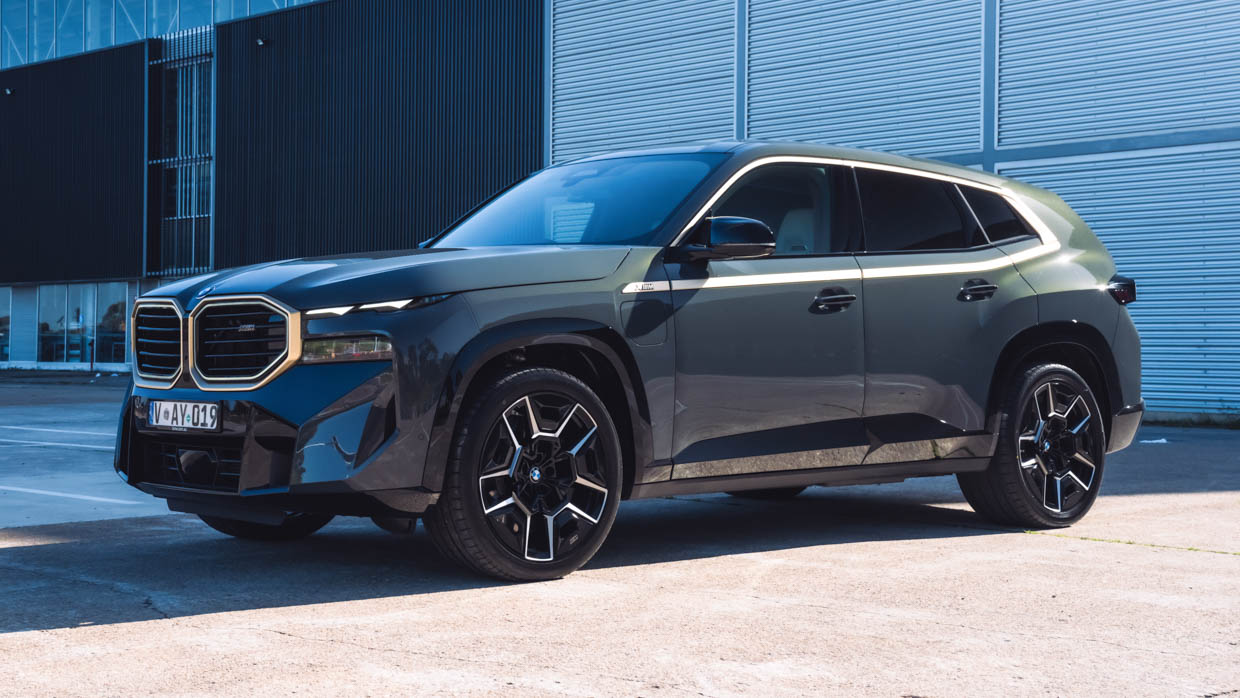
That the XM brings a claimed EV-only range of up to 88 kilometres and quotes combined PHEV consumption of between 1.5-1.6L (BMW M’s global figure) and 2.7L per 100kms WLTP (the AU figure) is essential in hitting the right efficiency targets to balance out the sheer performance offered.
So a big, heavy, luxo-performance makes sense, or at least firmly covers enough of the right bases that BMW M feels it needs to with a figurehead model in 2023. One wrapped in one helluva ostentatious styling statement.
But does its excess – and excess in many different departments – combined to create a convincing whole?
The BMW XM clocks in at $302,200 list, or around $320k and change on road.
Unsurprisingly, it’s fully loaded with expected features and offers more than a few standard-fit surprises and delights.
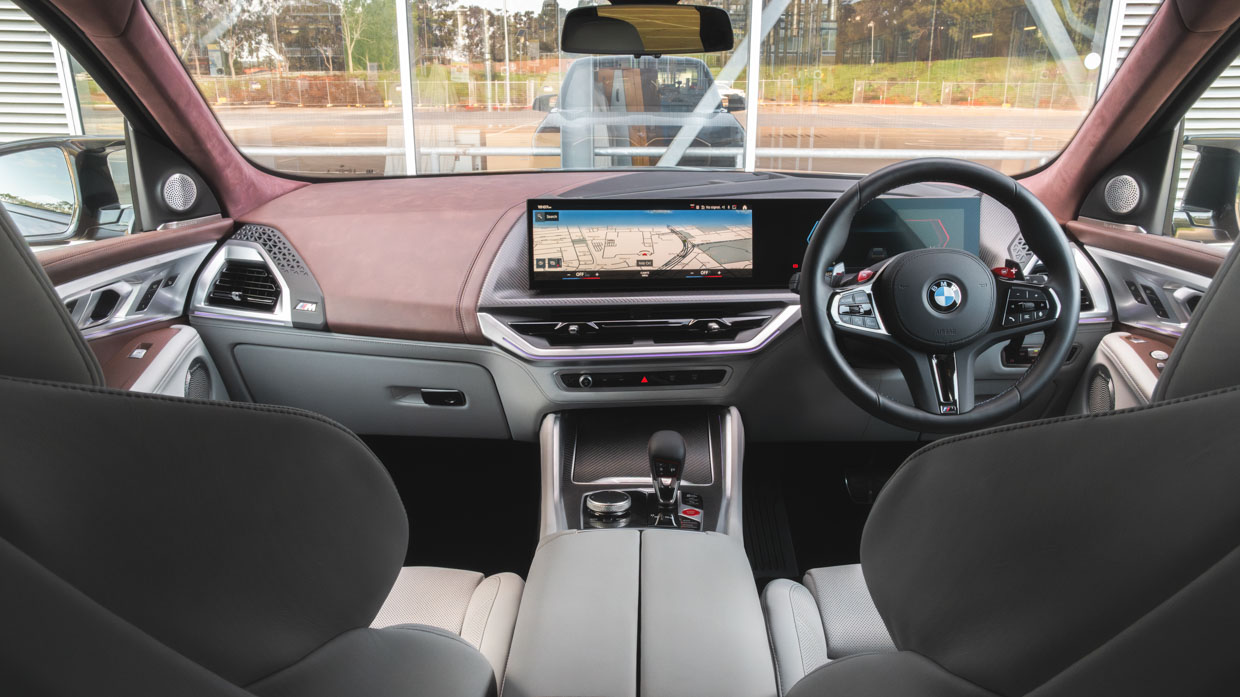
It will be supplanted in the coming months with the arrival of the Label Red ($349,900) and the confusingly named Label Red Edition ($349,900), the latter very much identical to the former if with a limited 30-unit release and finished in exclusive ‘frozen’ satin paintwork and different coloured accents.
Standard equipment on the XM includes:
The XM comes in a choice of seven standard paint colours, three wheel styles and four interior colour schemes, all at no added cost. The list price also includes five years of BMW Service Inclusive servicing, a flexible fast-charging cable and public charging cable. BMW Individual paint finishes are also available via special order.
That the XM is quick when it fully mans the battlestations is expected. But what’s really interesting is how it drives throughout the breadth of the on road experience across the various options that a plug-in hybrid offers.
There are three operating modes: hybrid and electric, which are both self-explanatory, as well as eControl that largely leverages internal combustion to top up the 25.7kWh (usable) lithium ion battery as a charging mode on the move.
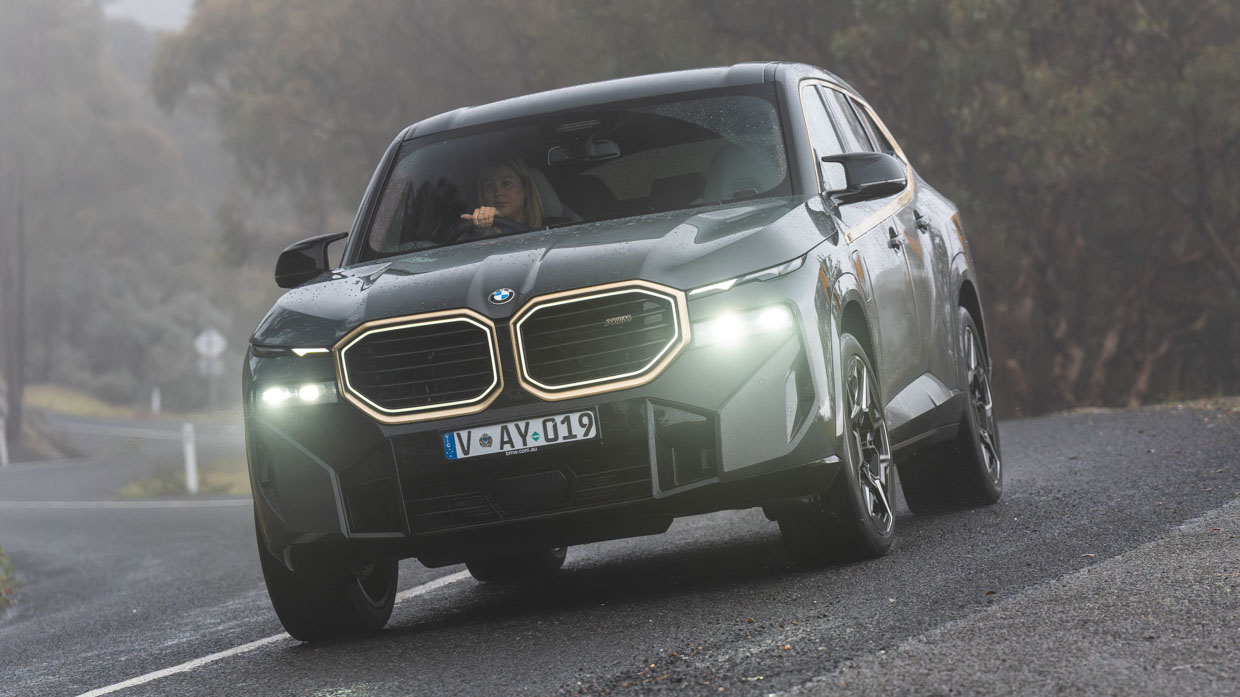
The fairest general snapshot of performance and efficiency is ‘hybrid’. So with the battery topped up – around 4 hours 15 minutes to 100 percent at its 7.4kW AC quickest – we proceed to road trip the XM from inner city Melbourne to twisty mountain roads in its outskirts via motorways for a 100km loop for an honest real-world assessment.
The XM favours EV mode. A lot. It’s almost as if during balanced driving it’ll only rumble the V8 into life when it’s really necessary. Unsurprisingly, the transition between electric drive and petrol intervention is pronounced given the nature of the twin-turbo V8 character, even if the gruff sonics have clearly been toned down for the SUV.
Indeed, at 360kW and 650Nm, this 4.4L biturbo is quite a conservative tune given the M5 Competition offers 460kW and 750Nm…and the XM Label Red will only cede just 20kW outright to the mega sedan. When it does weigh into drive, the V8 feels solid, muted and under-stressed, if well suited to the XM’s luxo-performance leanings.
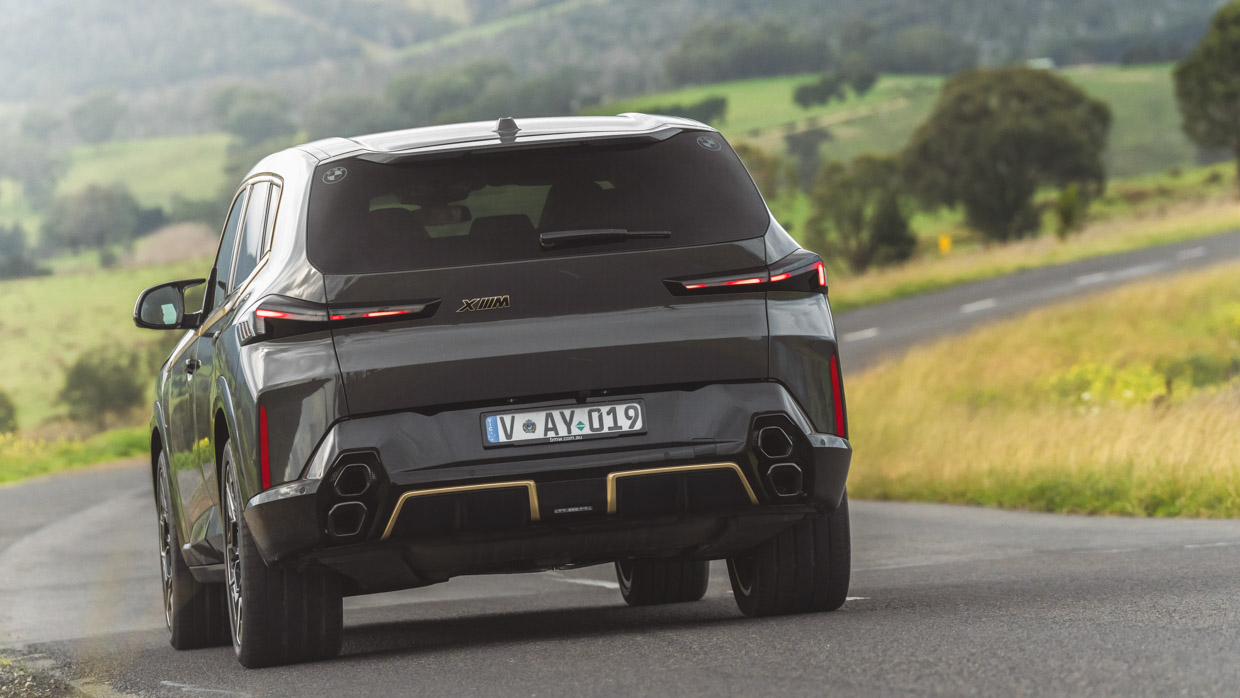
The sole electric motor is advertised at just 145kW and 280Nm, which seems paltry propulsion for a 2710kg vehicle. It’s situated upstream and integrated into the eight-speed conventional automatic where it feeds the rear-bias all-wheel system, rather than, say, powering an axle independent ala Mercedes-AMG GLC63 S.
Muddying comprehension of this PHEV format is that BMW states that “a pre-gearing stage is used to increase the maximum torque produced by the electric motor to 450Nm at the transmission input” despite still quoting just 280Nm in all technical data.
EV drive certainly feels robust enough. Around town, there’s ample energy on tap off the mark to mask the XM’s heft nicely, making it feel more lithe than it actually is. It runs almost silently, offers instant poke and, again, the petrol engine seems to refuse to chime in even during hard acceleration.
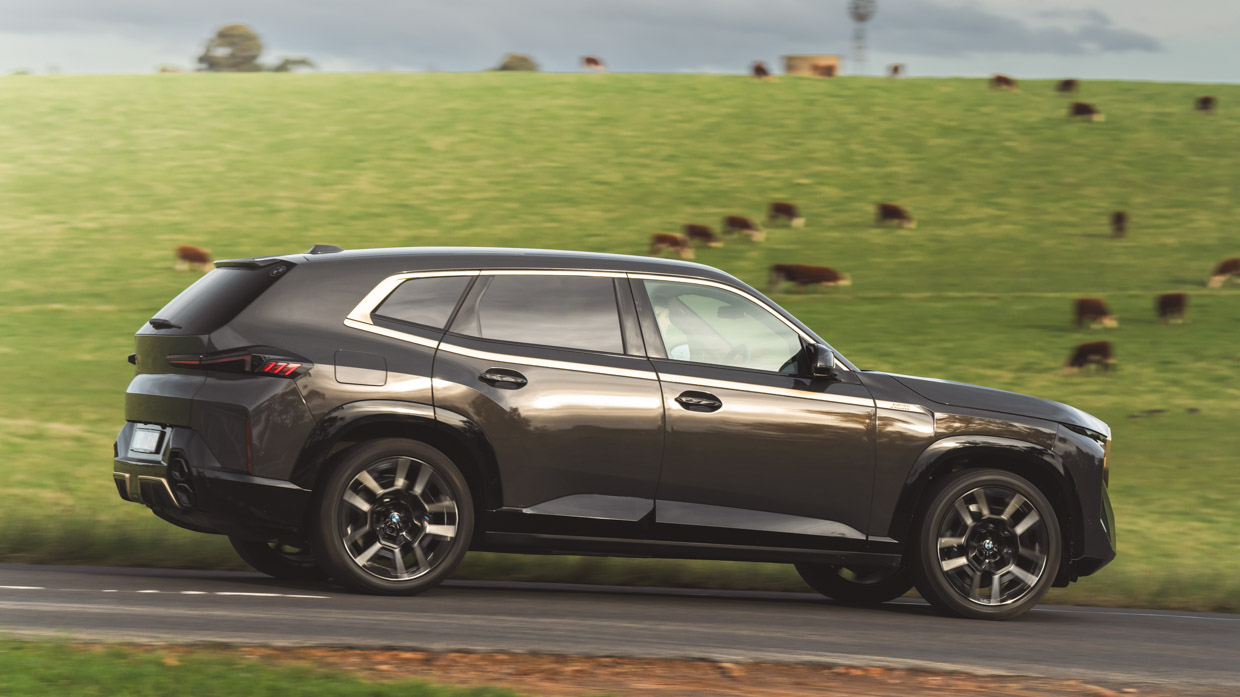
The EV throttle response, though, is a little too urgent. The XM lunges at a squeeze of the right foot and, in traffic, the big Bimmer demands perhaps more concentrated throttle precision than it perhaps ideal. But thrust is instant and strident, and certain has its place exiting side streets into fast moving traffic.
The XM can run in electric drive through to 140km/h – plenty of headroom for Aussie consumption – and so it proves during long stints along Victoria’s motorways dailed up to 110kmh. Despite the modest on-paper stats, the electric motor does a fine job merging and overtaking at speed, while response and acceleration remains crisp at pace.
The jury is out as to how higher-speed EV running affects electric consumption and range. BMW quotes a combined figure of around 30kWh/100km: the worst we saw was almost 53kWh/100km (plus 3.9L/100km/h of fuel consumption) in Melbourne peak hour.
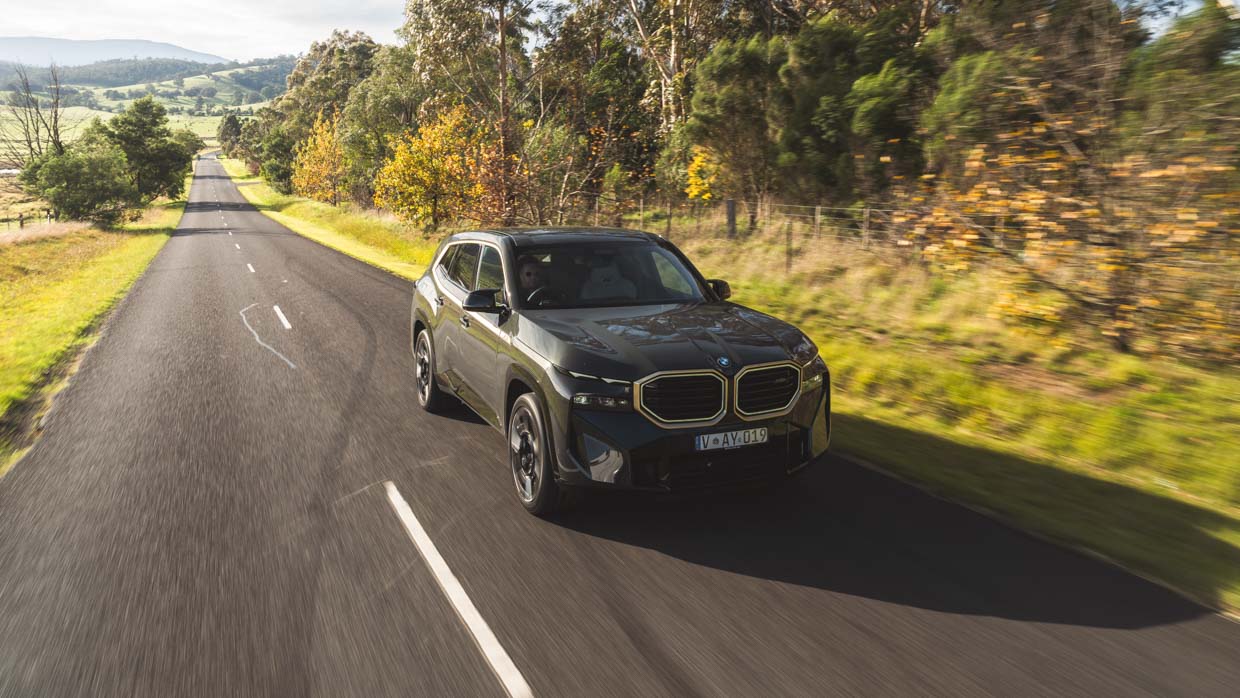
But after driving for 100km or so, after the battery is completely depleted in hybrid mode and the V8 rumble becomes an ever-present companion, fuel use increases dramatically to the high teens as the electrical system is reduced to only short bursts of support.
Clearly, the PHEV format might pay efficiency dividends only if you diligently and frequently plug in to recharge. Failing to do so will also hamper the combined petrol-electric drive centric accessing maximum performance.
Coercing M car dynamics from 2.7 tonnes of vehicle is no easy feat, and injecting the expected driver engagement perhaps moreso. But BMW M has done a decent job of massaging a handling package that, like its propulsion, masks weight reasonably well.
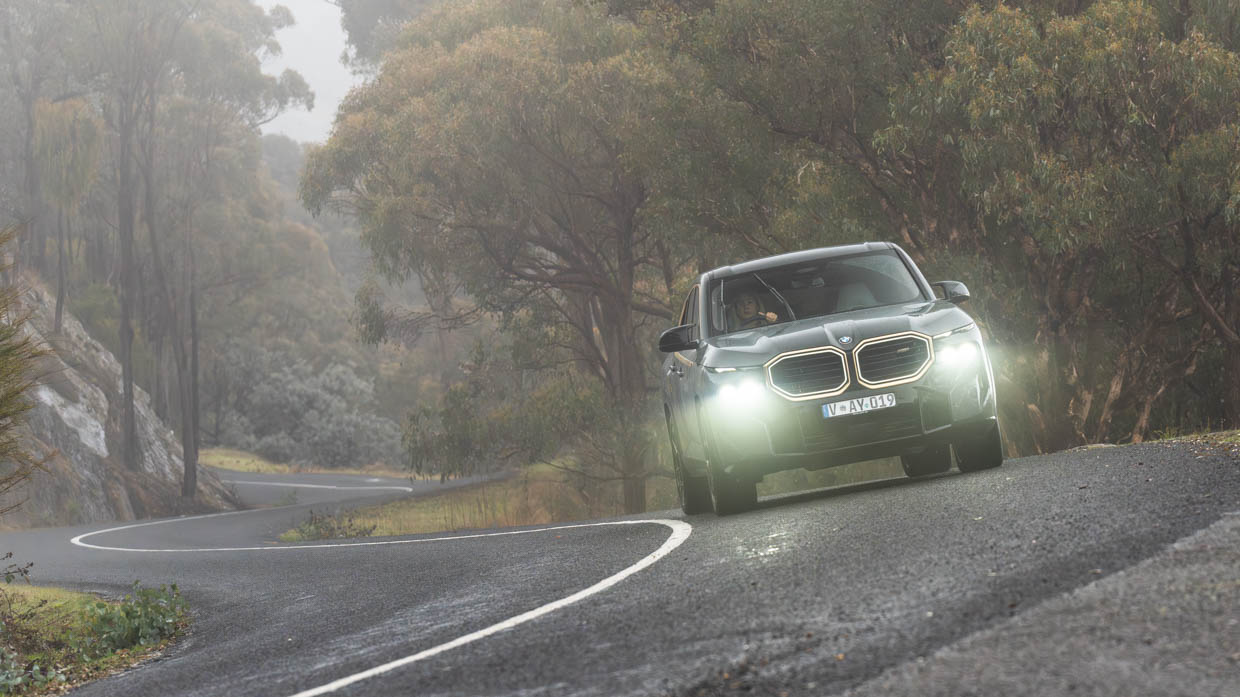
The steering is clear and well weighted, the front end is direct and co-operative and once you push on the curves the XM sits flat and demonstrates some tenacious body control. Hook it hard and there’s ample grip from the licorice thin 23-inch rubber.
Most of the high-voltage hardware sits low under the second row bench, helping to create an inherently even balance in counter-acting the big V8 up front. All the xDrive AWD’s rear-bias and the chassis conjures up some enthusiasm to shift its rump and rotate neatly through the mid-corner…if you’re brave enough to toy with sheer lateral interia of the thing.
Wrestling with the XM weight does demand that the driver swallow the brave pills and put trust in lateral grip.
Particularly during our time assessing the SUV is back country Victoria in winter where the mercury is so low that an in-dash notification flickers to warn of black ice conditions. We won’t be grabbing its scuff, M4-like, today.
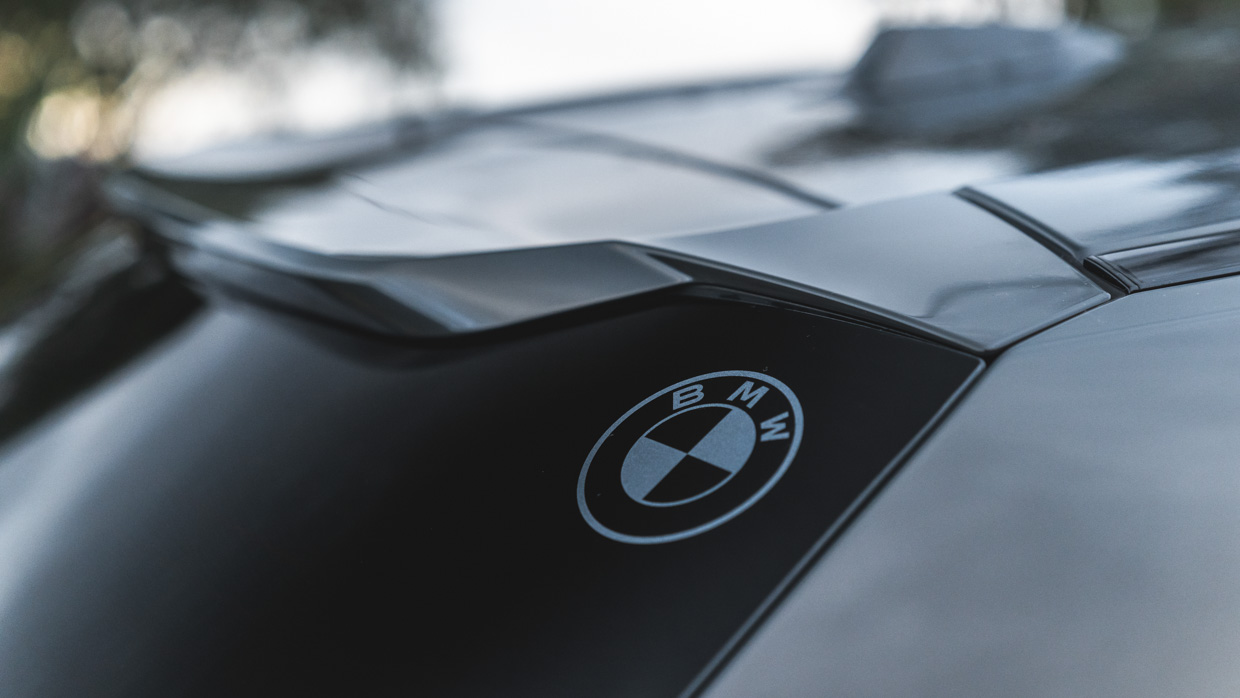
There are myriad settings to adjust in the ‘M setup’ menu to taste, but in a generally sportier calibration the all-paw drive just works away silently feeding the right amount of torque to each wheel, including some precision shuffling across the rear axle thanks to the tricky M Sport differential.
But what the chassis seems to lack is flexibility. The steel sprung, adaptive damped suspension seems so focused on ironclad body control – and in any of the three adjustable damper settings – that the ride is always terse and constantly fidgety.
Across a lump back road, the XM is constantly animated as it bobs and rocks across the road surface. Despite mustering up enough surefooted grip even in sharp mid-corner bumps, it’s rarely settled. It’s tough to ping it too much given that this seems an M car trait and is, perhaps, part of the character BMW M specifically favours in its tunings.
Where its stiff ride becomes less acceptable is around town. Where the XM is constantly very fizzy as the 23s pick up the smallest imperfections that transmit through the cabin, thumping conspicuously across road joints and cats’ eyes. And it remains that way no matter how much you try to soften the dampers in the M setup submenu.
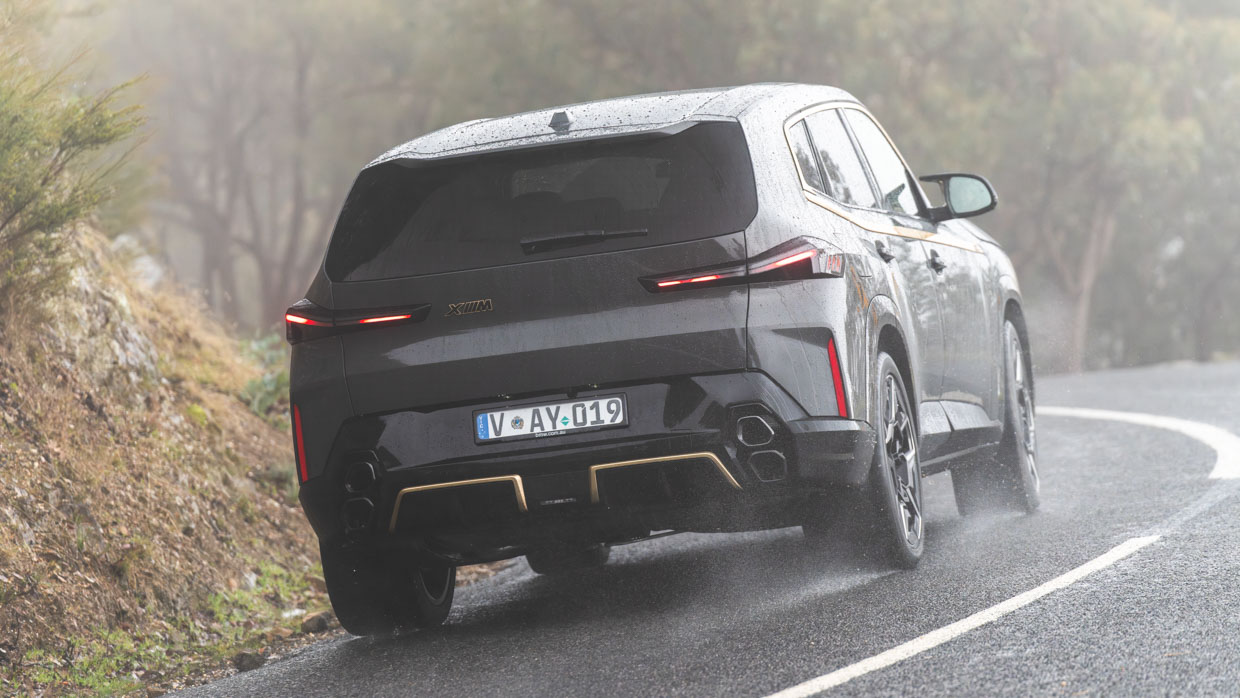
It’s nowhere near as nice as, say, the 7 Series that shares the same platform but is dialed in far better in its breadth and balance of ride, handling and body control – even in near equally-hefty 2640kg i7 xDrive60 form. Par for an M2 or M4 course, perhaps, as part of fanfare in motion, but the ride is simply too unsettled for a rig this fulsome and with so much luxurious appointment as baggage.
Otherwise, the low-speed refinement is very good and it feels solid enough, though another trait that does become tiresome and almost fatiguing during a long haul is the bassy thrum of the rubber on the hot-mix. It’s particularly prominent at speed on motorways.
Again, this seems to be some collateral effect of injecting an M car aura into XM as a point of difference to regular BMW stock, if one that is really at odds with the luxury vibe so much of the package conspired to create. And nowhere more so than the cabin space…
The word that instantly comes to mind when you first climb in is: fancy.
Much of the effect is the striking two-tone effect, offered in three hard-contrasting combinations of the four schemes offered in XM as well as mostly all black.

Our tester’s Silverstone II (white-ish) merino leather and vintage leather in coffee brown split theme further heightened the fanfare with judicious use of frosted silvers and raw carbon-fibre effect in the detailing.
Fancy it is, if not quite as richly opulent and welcoming as either a 7 Series limousine or X7 SUV, both of which are more warmly welcoming than XM’s almost forced blend of luxuriousness and sportiness.
But that vintage leather: where have you been all of my motoring life? It’s sumptuous, tactile and looks utterly gorgeous, perhaps moreso had the XM interior theme not embraced such a hodge podge of contrasting materials and textures.
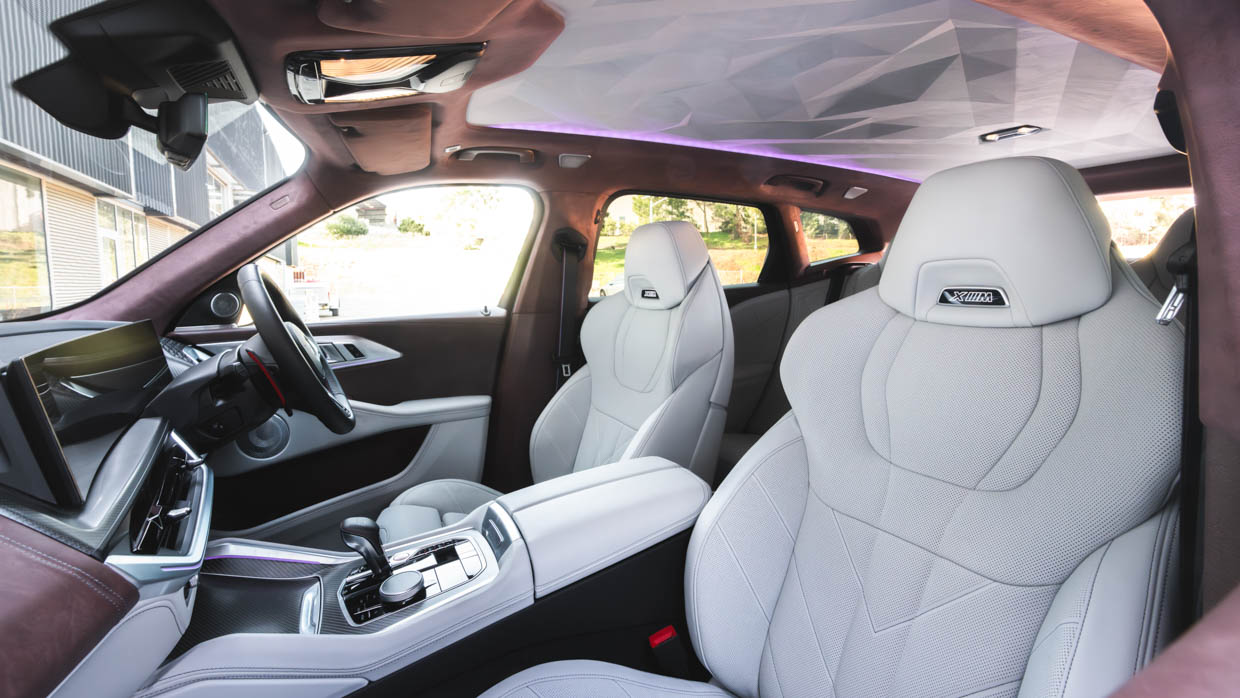
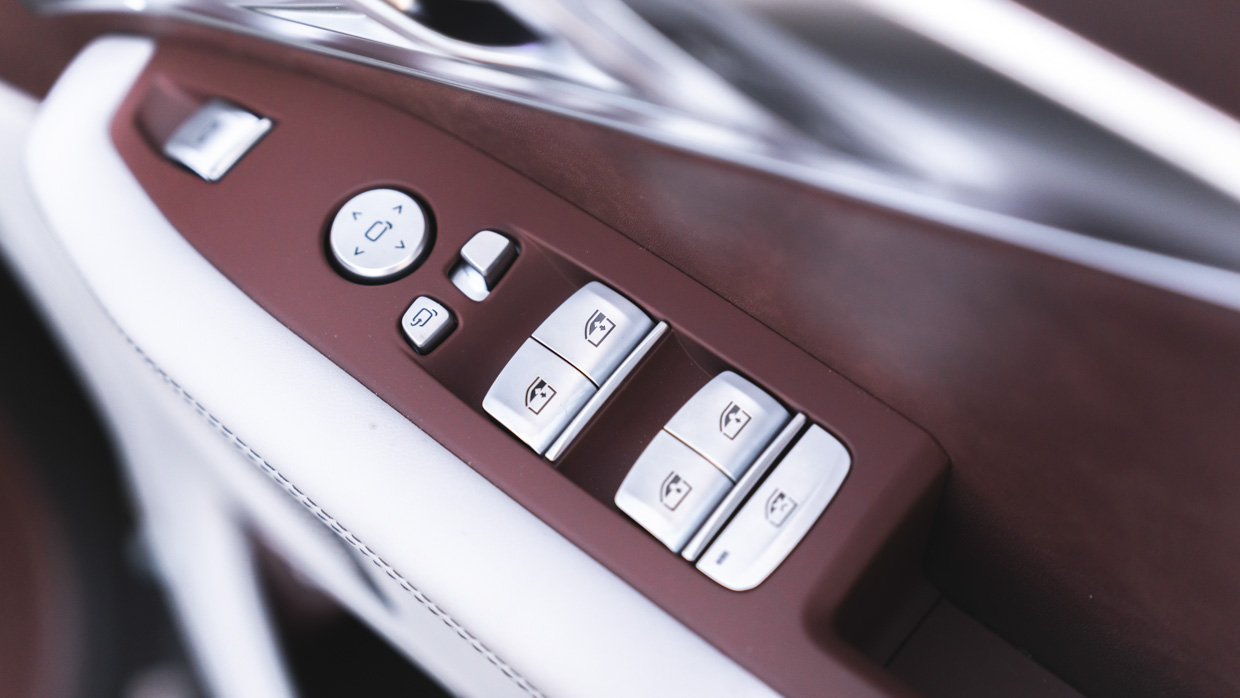
That said, the horizontal split-colour scheme of the dash fascia that curves its way through the door cards is wonderful, with suede-like headlining that extends up to the novel party trick that is the illuminated ceiling.
It has a three-dimensional prism structure lit with 100 LED lights for an ostentatious overhead mood lighting effect. And on start-up, the M brand’s signature red, white and blue motif streaks along the entire ceiling.
Gimmicks apart, you sense that there’s an eye for architectural interior or furniture design that has crept in and influenced the XM’s interior. It’s both inspired and refreshing, even if this cabin doesn’t quite pull off the effect quite as coherently as it could.
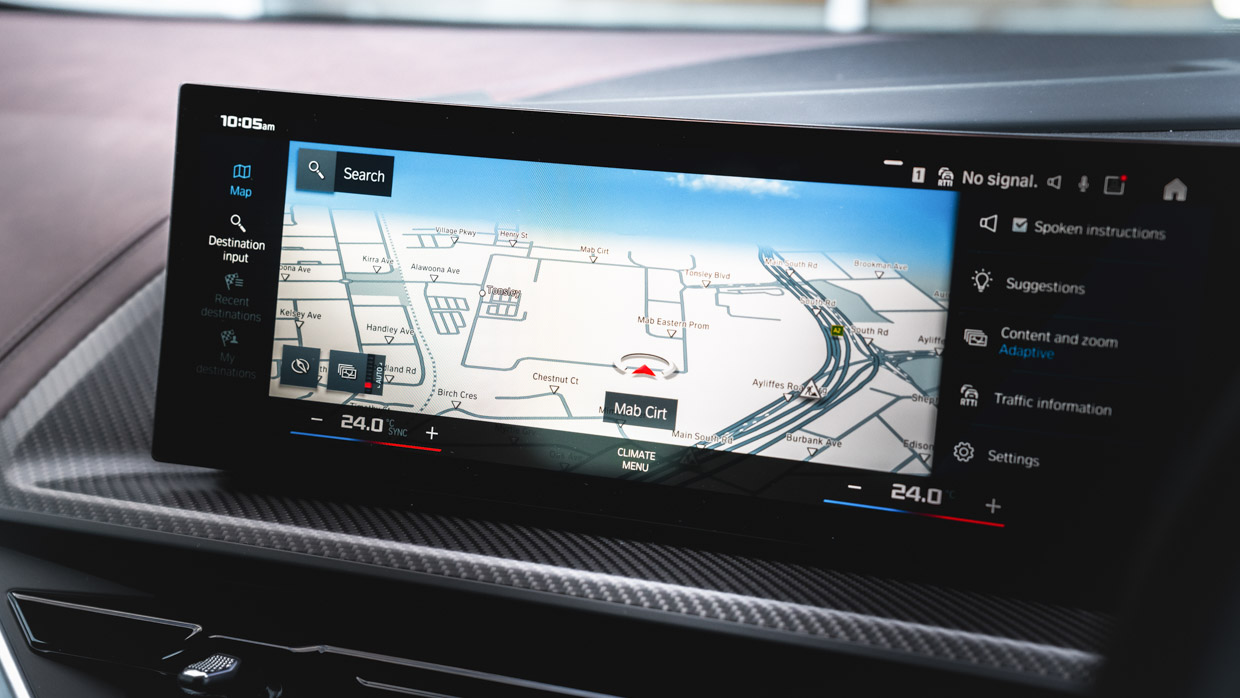
If anything, the carbon-fibre flourishes are excess and at odds with the leather-dipped luxury vibe. It’s most around the curve display fascia and drips down along the centre stack that thankfully maintains plenty of easily accessible physical controls for audio, media control and vehicle setting adjustment.
That’s a good thing for luddites such as your reviewer given that the Operating System 8 media system is heavily skewed toward natural voice recognition and gesture control that are more trick bag fanfare than they are properly real-world practical.
The 12.3-inch and whopping 14.9-inch media/control screen are housed in BMW’s signature curved housing that’s oriented towards the driver and, as a result, appears lopsided from a driving perspective. It’s strange, if not exclusive to XM: the X7 SUV has the same arrangement.
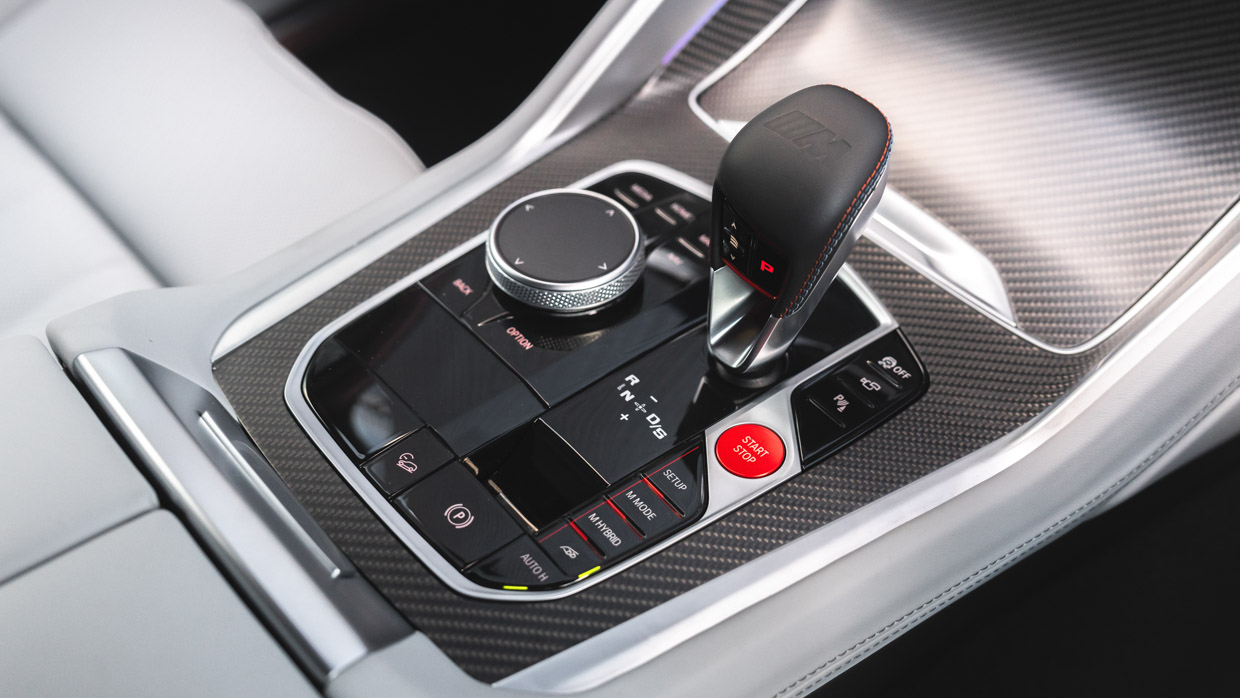
But while it’s an undeniably large machine, there’s a certain lightness to the XM that doesn’t make it feel nearly as hefty as its upper-large stablemate. It seems narrower in the cabin width, lower slung despite offering ample head room and just a fair bit easier to guide and slip through traffic.
The seats are ornate and somewhat familiar – they’re similar to the M4-spec, here with ventilation and massage functionality up front, with heating at all outboard seating in both rows. Even the cupholders are heated or cooled depending on your choice of refreshment, and the wheel and front armrests can also be heated.
But the real centrepiece of the XM is the second row accommodation. BMW calls it the M Lounge – again, more architecture themes – where the rear bench is one piece and shaped like a couch, thanks largely to the fact that the diamond quilted Merino leather trim extends down along the doors.
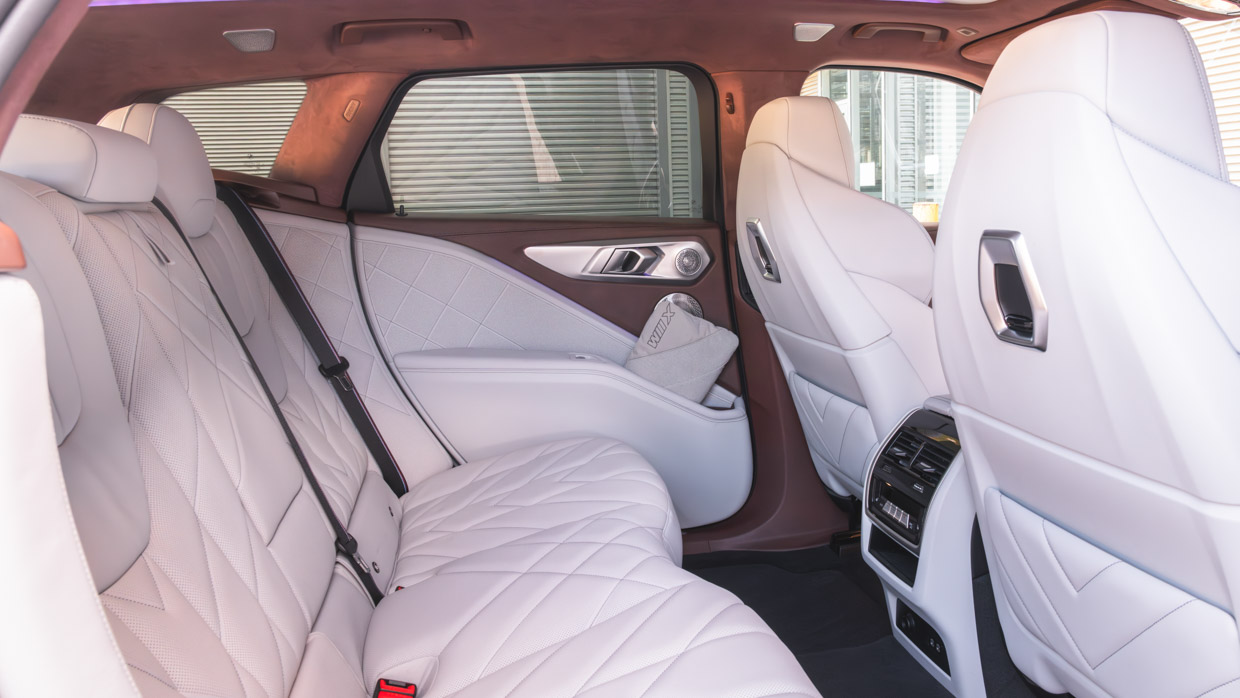
The rear seat is wonderfully comfortable, complemented by tremendous legroom and that mood-lit ceiling for an ambience that’s completely unique and wholly luxurious. Even the huge, deep door bins are trimmed in brown leather – or leatherette perhaps – and include neat guide lighting to match the ceiling, and are featured in both rows.
Row two also gets a pair of exposed USB-C ports, two hidden USB-C ports in cubbies housed in the backs of the front seats, dedicated third- and four-zone climate controls and 12-volt outlet.
Another neat touch is the four overhead speakers for the 1500-watt Bowers & Wilkins surround sound that complement the metal trimmed speakers in the doors.
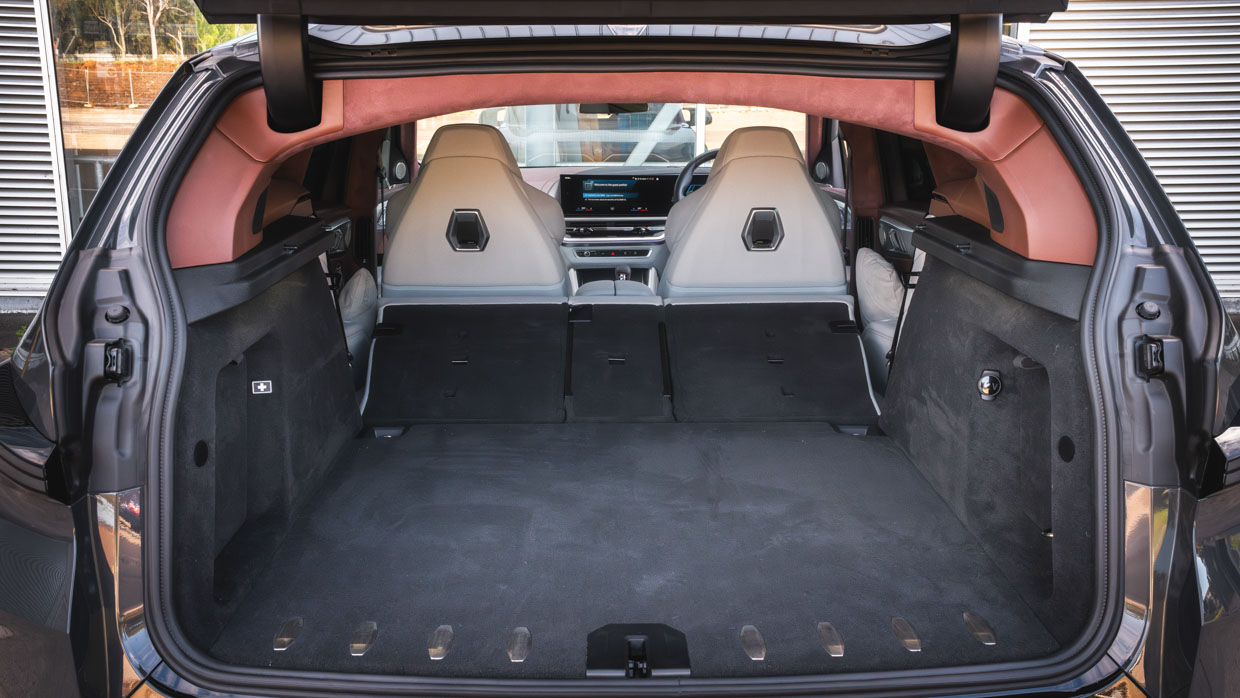
There are even removable Alcantara trimmed pillows included for your lower back that are loaded into a spare bag that sits in the boot with your charging cables when you’re not using them.
Speaking of which, the boot space is 527 litres, which is pretty paltry for an SUV breaching five metres in length. And that’s before you factor in the bulky if pleasing bag for your pillows and cables. Part of this is due to the high floor location that’s necessary because the fuel tank is packaged above the hefty rear axle assembly. There’s no spare wheel.
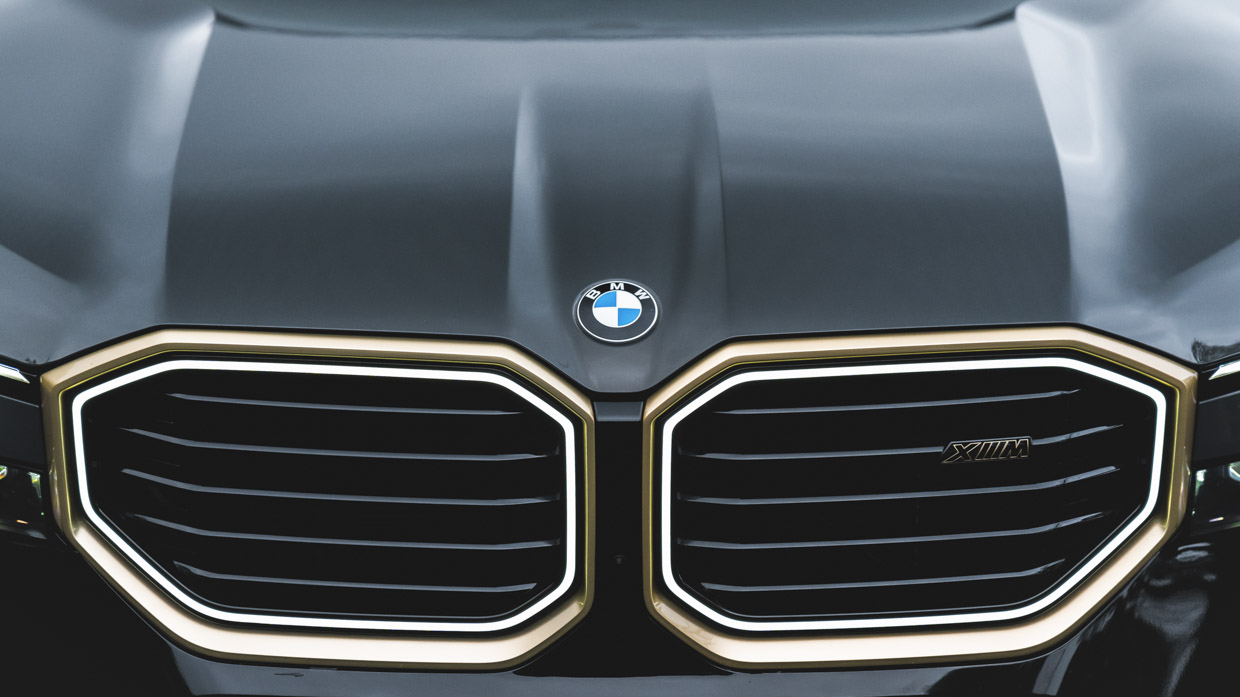
BMW boasts that the XM has the “largest selection of driver assistance systems offered in any…BMW M.” However, the PHEV halo car is yet to be assessed by ANCAP.
Feature highlights include all-speed AEB, active cruise control with stop and go, lane departure warning and lane keeping assist, steering assist, front and rear cross traffic alert, side collision warning, lane change assistant, automatic speed limit assist and a reversing assistant system.
As outlined above, the XM comes with a combined fuel consumption claim of just 2.7L/100kms. Of course, that takes into account a fully charged battery and an EV only range of between 82 and 88 kilometres.
Once the battery was depleted, we saw consumption spiral into double figures. So you can take that 2.7L figure as suggestive, if you intend on plugging in the XM every 100km for around four and half hours on charge (at a 7.4kW AC maximum rate).
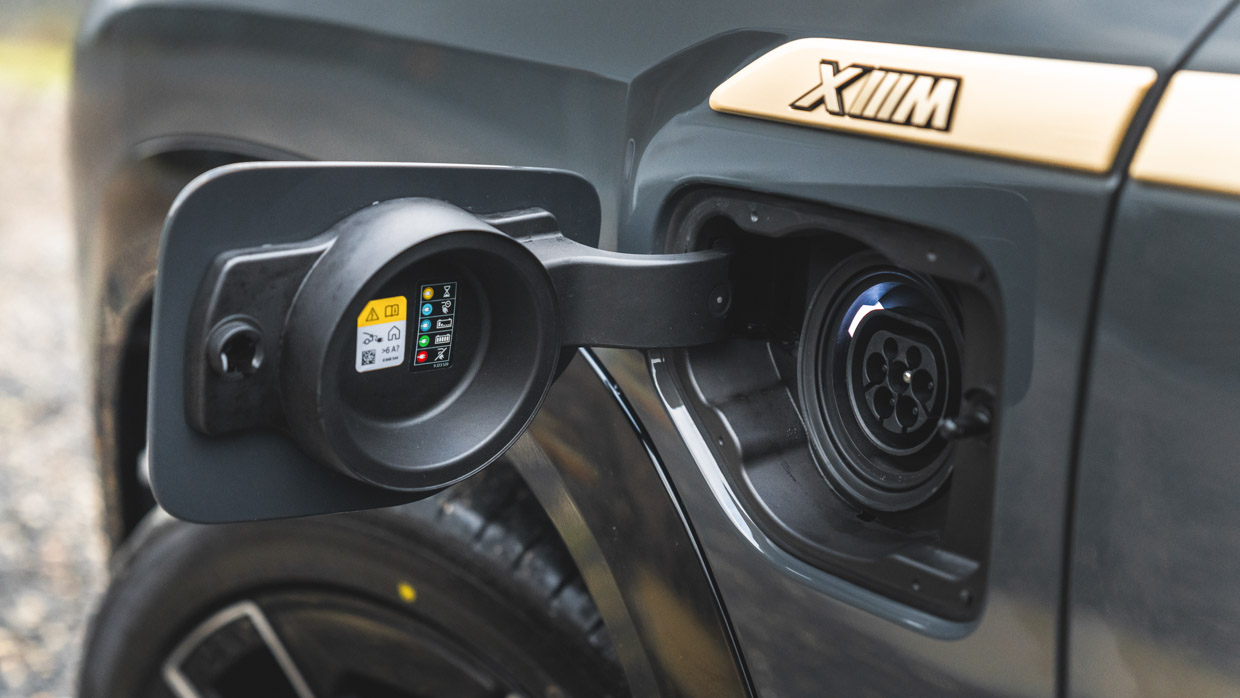
One sweetener is that the XM comes with five years of complementary BMW Service Inclusive servicing.
The XM is covered by a five-year, unlimited-kilometre warranty.
The XM is certainly topical on many fronts: its dedicated M car stature, its polarising styling, its elaborate and left-field leaning interior execution, its hybrid drive, its heft price and weighbridge ticket and, of course, M car go-fast aspirations.
Combined, it makes a helluva statement, whether you like the cut of its jib or not.
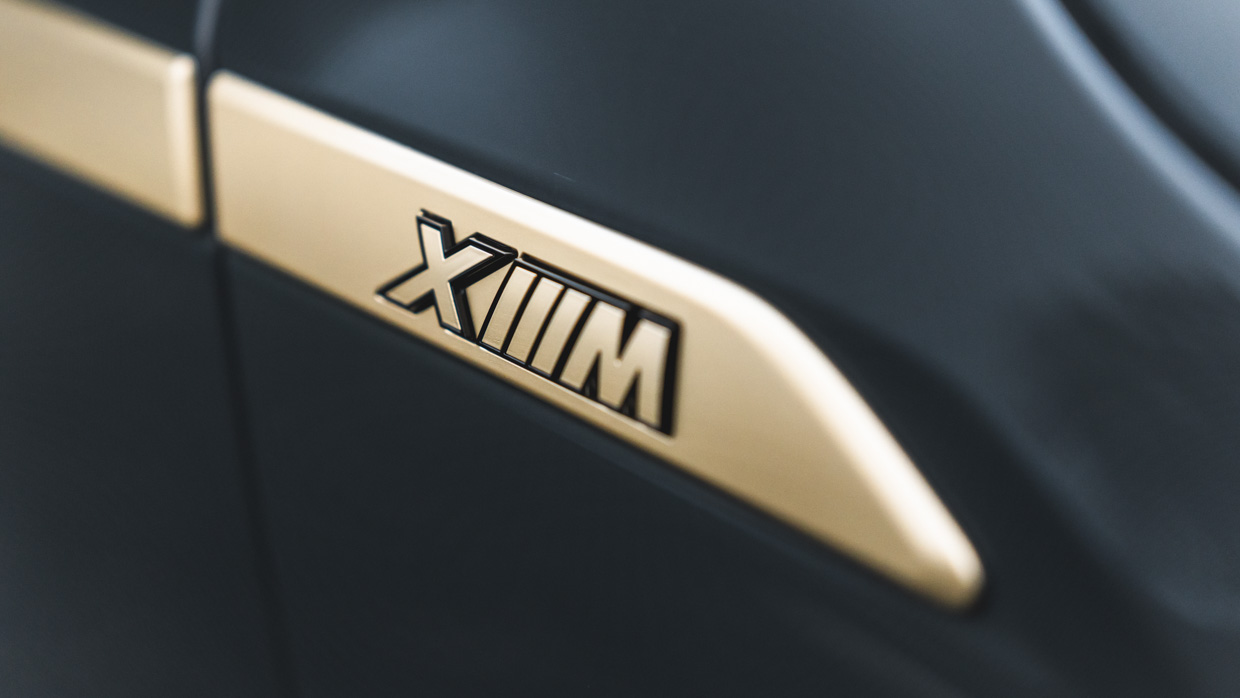
But by committing to the twin-turbo V8 PHEV format to park itself equally in the past, present and future, it’s somewhat encumbered with the inherent excess it tries to celebrate.
And the result is an amalgamated concept that dearly wants to be a dynamic driver’s machine, yet is duty bound to also represent a new pillar of luxury for BMW M maker.
In trying to service two lofty aims in high performance and high luxury, the XM succumbs to compromises in both. It’s not quite as focused and frisky as fine M cars of the past – even some M-fettled SUVs – and it’s not nearly as luxurious and comfy as some mainstream BMW offerings.
It’s not that it can’t be done. Case in point is the brilliant i7 limousine, which offers superb ride comfort and remarkable handling for what it is.
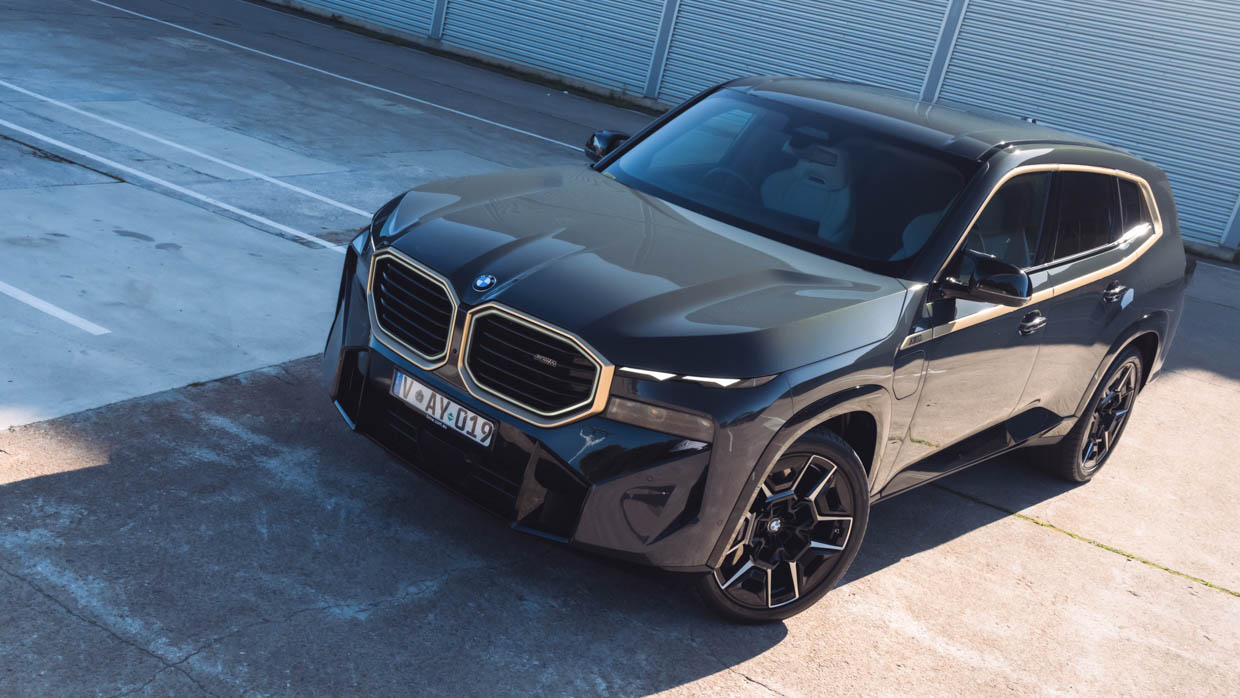
Pity the trap BMW M found itself in when concocting this figurehead model. It simply needed a bigger and bolder statement than fronting up with an electric M5…no less because BMW’s lineup already includes an electric i5 M60 xDrive that, at 3.8sec claimed, is already a fair bit quicker than this plug-in V8-powered XM.
And something that truly sets itself apart from the stalwart V8 heroes in the X5 M and X6 M that many brand loyalists tend to be drawn to.
But what the XM does do more successfully is that it grabs the attention harder and gets a lot more chins wagging…
Key specs (as tested)
About Chasing cars
Chasing Cars reviews are 100% independent.
Because we are powered by Budget Direct Insurance, we don’t receive advertising or sales revenue from car manufacturers.
We’re truly independent – giving you Australia’s best car reviews.
The estimate provided does not take into account your personal circumstances but is intended to give a general indication of the cost of insurance, in order to obtain a complete quote, please visit www.budgetdirect.com.au. Estimate includes 15%^ online discount.
^Conditions Apply
Budget Direct Insurance arranged by Auto & General Services Pty Ltd ACN 003 617 909(AGS) AFSL 241 411, for and on behalf of the insurer, Auto & General Insurance Company Limited(ABN 42 111 586 353, AFSL 285 571).Because we don’t know your financial needs, we can’t advise you if this insurance will suit you. You should consider your needs and the Product Disclosure Statement before making a decision to buy insurance. Terms and conditions apply.
Indicative quote based on assumptions including postcode , 40 year old male with no offences, licence suspensions or claims in the last 5 years, a NCD Rating 1 and no younger drivers listed. White car, driven up to 10,000kms a year, unfinanced, with no modifications, factory options and/or non-standard accessories, private use only and garaged at night.
^Online Discounts Terms & Conditions
1. Discounts apply to the premium paid for a new Budget Direct Gold Comprehensive Car Insurance, Third Party Property Only or Third Party Property, Fire & Theft Insurance policy initiated online on or after 29 March 2017. Discounts do not apply to optional Roadside Assistance.
2. Discounts do not apply to any renewal offer of insurance.
3. Discounts only apply to the insurance portion of the premium. Discounts are applied before government charges, taxes, levies and fees, including instalment processing fees (as applicable). The full extent of discounts may therefore be impacted.
4. We reserve the right to change the offer without notice.